#12 agile principles explained
Explore tagged Tumblr posts
Text
youtube
Discover 12 Agile principles explained with examples in just 5 minutes! Subscribe for weekly updates on Agile methodology, Scrum, SAFe, and more. Hit the bell icon for notifications! #Agile #Scrum #SAFe #AgileMethodology
#12 agile principles#agile principles#what are the 12 principles of agile#agile principles explained#12 agile principles explained#agile manifesto principles#agile#12 principles of agile#agile manifesto 12 principles#12 principles#principles of agile manifesto#Youtube
0 notes
Text
Price: [price_with_discount] (as of [price_update_date] - Details) [ad_1] "One of the great things about the book is the way the authors explain concepts very simply using analogies rather than programming examples–this has been very inspiring for a product I'm working on: an audio-only introduction to OOP and software development."–Bruce Eckel"...I would expect that readers with a basic understanding of object-oriented programming and design would find this book useful, before approaching design patterns completely. Design Patterns Explained complements the existing design patterns texts and may perform a very useful role, fitting between introductory texts such as UML Distilled and the more advanced patterns books."–James NobleLeverage the quality and productivity benefits of patterns–without the complexity! Design Patterns Explained, Second Edition is the field's simplest, clearest, most practical introduction to patterns. Using dozens of updated Java examples, it shows programmers and architects exactly how to use patterns to design, develop, and deliver software far more effectively. You'll start with a complete overview of the fundamental principles of patterns, and the role of object-oriented analysis and design in contemporary software development. Then, using easy-to-understand sample code, Alan Shalloway and James Trott illuminate dozens of today's most useful patterns: their underlying concepts, advantages, tradeoffs, implementation techniques, and pitfalls to avoid. Many patterns are accompanied by UML diagrams. Building on their best-selling First Edition, Shalloway and Trott have thoroughly updated this book to reflect new software design trends, patterns, and implementation techniques. Reflecting extensive reader feedback, they have deepened and clarified coverage throughout, and reorganized content for even greater ease of understanding. New and revamped coverage in this edition includes Better ways to start "thinking in patterns" How design patterns can facilitate agile development using eXtreme Programming and other methods How to use commonality and variability analysis to design application architectures The key role of testing into a patterns-driven development process How to use factories to instantiate and manage objects more effectively The Object-Pool Pattern–a new pattern not identified by the "Gang of Four" New study/practice questions at the end of every chapterGentle yet thorough, this book assumes no patterns experience whatsoever. It's the ideal "first book" on patterns, and a perfect complement to Gamma's classic Design Patterns. If you're a programmer or architect who wants the clearest possible understanding of design patterns–or if you've struggled to make them work for you–read this book. ASIN : B001U5VJW2 Publisher : Addison-Wesley Professional; 2nd edition (12 October 2004) Language : English File size : 6423 KB Simultaneous device usage : Up to 5 simultaneous devices, per publisher limits Text-to-Speech : Enabled Screen Reader : Supported
Enhanced typesetting : Enabled X-Ray : Not Enabled Word Wise : Not Enabled Print length : 531 pages [ad_2]
0 notes
Text
What are the questions asked in DevOps interview for bigginers?
In the competitive IT industry, DevOps is becoming increasingly popular, and aspiring professionals are often asked a variety of questions in interviews. This guide provides you with the top 20 beginner DevOps interview questions, along with detailed explanations to help you prepare confidently.
1. What is DevOps?
Explanation: DevOps is a set of practices that combines software development (Dev) and IT operations (Ops). It aims to shorten the development lifecycle while delivering features, fixes, and updates frequently in alignment with business objectives.
2. What are the key components of DevOps?
Explanation: The key components of DevOps include continuous integration, continuous delivery (CI/CD), automation, infrastructure as code (IaC), monitoring, and collaboration between teams.
3. Explain Continuous Integration (CI).
Explanation: CI is a DevOps practice where developers frequently merge their code changes into a central repository, followed by automated builds and tests. This helps catch bugs early and speeds up the development process.
4. What is Continuous Delivery (CD)?
Explanation: CD ensures that code changes are automatically prepared for a release to production. It builds upon CI and automates the delivery of new updates, ensuring they are ready for production after passing through various test stages.
5. What are some common DevOps tools?
Explanation: Some popular DevOps tools include:
Jenkins for CI/CD automation
Docker for containerization
Kubernetes for container orchestration
Ansible for automation and configuration management
Git for version control
6. What is Infrastructure as Code (IaC)?
Explanation: IaC is a key DevOps practice where infrastructure is defined and managed using code, rather than through manual processes. Tools like Terraform and AWS CloudFormation are often used to automate infrastructure provisioning and management.
7. What is the role of version control in DevOps?
Explanation: Version control, using tools like Git, enables multiple developers to work on a project simultaneously. It keeps track of changes and maintains a history of revisions, ensuring that changes are coordinated and easily reversible.
8. What is Docker, and how does it fit into DevOps?
Explanation: Docker is a containerization tool that allows developers to package applications and their dependencies into a container, ensuring they run consistently across different environments. Docker simplifies deployment and scalability in DevOps workflows.
9. Explain the concept of container orchestration with Kubernetes.
Explanation: Kubernetes is an orchestration platform for managing, scaling, and deploying containerized applications. It automates the distribution of containers across a cluster of machines and handles load balancing, service discovery, and more.
10. What is a microservices architecture?
Explanation: Microservices architecture is an approach where applications are built as a collection of small, independent services. Each service can be developed, deployed, and scaled individually, making the system more resilient and flexible.
11. How do monitoring and logging fit into a DevOps pipeline?
Explanation: Monitoring and logging are crucial for identifying issues in production. Tools like Prometheus, Grafana, and ELK (Elasticsearch, Logstash, and Kibana) are often used to ensure system health, track performance, and troubleshoot problems.
12. What is the difference between Agile and DevOps?
Explanation: Agile is a software development methodology focused on iterative development and collaboration between teams. DevOps extends Agile principles by integrating development and operations, emphasizing automation, continuous feedback, and faster delivery.
13. What is a build pipeline?
Explanation: A build pipeline is a series of steps performed in sequence to automate the creation, testing, and deployment of code. It includes stages like source control, build, test, and deployment, ensuring that every change is properly validated before reaching production.
14. How do you manage configuration in DevOps?
Explanation: Configuration management involves maintaining consistency of systems and software over time. Tools like Ansible, Puppet, and Chef automate the process of configuring servers, ensuring that environments remain consistent across the development lifecycle.
15. What are the benefits of using Jenkins in DevOps?
Explanation: Jenkins is an open-source automation server that facilitates CI/CD processes. Its benefits include:
Easy integration with various DevOps tools
A large library of plugins
Flexibility to automate different tasks
A robust community for support
16. What is GitOps?
Explanation: GitOps is a DevOps practice where Git is the single source of truth for the system’s desired state. It uses Git pull requests to manage and deploy changes to applications and infrastructure, ensuring that changes are trackable and auditable.
17. What is the importance of automation in DevOps?
Explanation: Automation is crucial in DevOps because it reduces human intervention, minimizes errors, speeds up processes, and ensures consistency across deployments. This includes automating CI/CD, testing, infrastructure provisioning, and monitoring.
18. What is a rolling deployment?
Explanation: Rolling deployment is a technique where new versions of an application are gradually deployed to instances, replacing old ones. This ensures zero downtime by keeping part of the application available while the update is being deployed.
19. Explain the role of cloud platforms in DevOps.
Explanation: Cloud platforms, such as AWS, Azure, and Google Cloud, provide scalable and flexible infrastructure that aligns well with DevOps practices. They enable teams to provision resources on demand and integrate with automation tools to streamline deployments.
20. What is the significance of feedback loops in DevOps?
Explanation: Feedback loops ensure that teams get timely information about the performance and issues of their systems. Continuous feedback from users, automated monitoring, and testing tools help to detect problems early and ensure quick iterations.
Accelerate Your DevOps Career with Naresh IT’s DevOps Online Training
DevOps is essential for modern software development, and learning the skills needed to excel in DevOps is critical for your career. At Naresh IT, we offer comprehensive DevOps Online Training to equip you with in-demand skills like CI/CD, Docker, Kubernetes, cloud platforms, and more.
Whether you’re a beginner or looking to upskill, Naresh IT provides tailored content, hands-on labs, and real-world project experience to make you industry-ready.
Join Naresh IT’s DevOps Online Training today and kickstart your DevOps journey!
0 notes
Text
it’s the track we’ve been waiting for
yeah we knew it would come
so i roll out the rhymes, and they fall off my tongue
all because of the feelings that i now can barley numb
but when i’m clean and i write, my lines aren’t as dumb
i drive home from claire’s, and i feel like kitty pryde
i suppressed it for weeks but then i finally cried
i get so nostalgic when i hear L A D type beats
similar shit, different day,
i’m missin you.... are you missin me?
you’re gettin slizzard, and i’m sober, actin crazy insane,
I'm a survivor, but still, you know the question remains
and me too, ya feel? i’m actually doin the same
but it’s apparent that your voice has left a stain on my brain
you get to check out, i get to sit with the pain
i have epiphanies price checking while the store CD plays
ema and the diamonds, i guess i’m just too afraid?
i tread lightly, cuz they say that all we have is today
and so i head somehow in the foreword direction,
but sometimes i float stuck in emotional suspension
yes i have more discipline, but it’s progress, not perfection
if someone asks how i am, i still use too much discretion
because i take things too literal. i’m technically okay
i just think of Sketchy Techy way too often in the day
and it’s hard to be honest, what do you expect me to say?
so i’m back on step one, working to the best of my ability
i’m sick of the mental gymnastics, psychological agility
i wanna let down my walls, i crave genuine connection
but it’s hard to open up, and i get desperate for attention
i keep my responses on the surface, even with my closest friends
when did this shell form around me? when will this fear end?
but i’m gentle with myself. i know i’m not2shy,
but i’m just shy enough i can’t authentically reply
i’m taking baby steps, that’s the reality of my footwork
little by little, i’m here building up my network
i exist in arizona, no explaining god’s handiwork
but the mystery has held me, and my faith gave me my self-worth
i grow and i continue, in god’s will, i call it teamwork
a few steps forward, then one or two steps back,
i flirt and dance with the devil, till my soles turn black
like T.I. and Keri Hilson, God’s always got my back
i forget to pray sometimes, and i skip my tenth step
i get exhausted through the day, and i avoid getting in depth
but the next day i do better, 12 step principles are stressed
i believe more in God’s power than in chances or luck
i know i’m only human, i know sometimes i mess up
i admit i stray sometimes and my obsessions do disrupt
but the effort’s half the equation, so i never give up
#mine#2020#recovery#lyrics#wrote this while listening to philip e morris All I Love#very lad type sound#i don’t love this song but it’s nice to sit down and rhyme sometimes
1 note
·
View note
Text
Improve Your Frontend Agility with Proven Optimization Methods
Effective Performance Optimization Techniques for Frontend Development

In today’s fast-paced digital landscape, optimizing the performance of front-end applications is crucial for delivering a seamless user experience. Slow-loading websites or sluggish interactions can significantly impact user engagement and conversion rates. In this blog post, we’ll explore a range of effective performance optimization techniques for python front-end development. From optimizing assets to reducing render-blocking resources, we’ll provide practical tips and strategies to help you improve the speed and responsiveness of your frontend applications.
1.Performance Profiling and Analysis:
Understanding the importance of performance profiling and analysis.
Tools and techniques for measuring and benchmarking performance.
Identifying performance bottlenecks and areas for improvement.
2. Efficient Asset Management:
Optimizing and compressing images, CSS, and JavaScript files.
Leveraging browser caching and minification techniques.
Lazy loading and deferring non-critical assets.
3. Code Optimization:
Creating HTML, CSS, and JavaScript code that is both clean and optimized.
Minimizing unnecessary DOM manipulation and avoiding layout thrashing.
Using efficient algorithms and data structures for improved performance.
4. Critical Rendering Path Optimization:
Understanding the concept of the critical rendering path.
Minimizing render-blocking resources.
Optimizing CSS and JavaScript delivery to improve page load time.
5. Responsive Web Design:
Implementing responsive design principles for different screen sizes.
Using adaptive images and media queries.
Optimizing layout and performance for mobile devices.
6. Progressive Web Apps (PWAs):
Leveraging service workers and caching strategies for offline access.
Implementing background sync and push notifications.
Reducing the dependency on network requests for improved performance.
7. Performance Optimization Frameworks and Libraries:
Exploring popular front-end performance optimization tools.
Utilizing performance-focused libraries and frameworks.
Evaluating trade-offs and choosing the right tools for your project.
8. Continuous Performance Monitoring and Optimization:
Setting up performance monitoring tools for ongoing analysis.
Regularly reviewing and optimizing performance based on data.
Keeping up with new performance optimization techniques and trends.
9. Testing and User Experience Optimization:
Conducting performance testing and load testing.
Optimizing perceived performance and user experience.
Gathering user feedback to identify areas for improvement.
10. Minification and Bundling:
Explain the concept of minification and how it reduces file sizes by removing unnecessary characters and whitespace.
Discuss the benefits of bundling multiple files into a single file to minimize HTTP requests.
Mention popular tools and techniques for minification and bundling, such as webpack or Parcel.
11. Optimizing Images:
Discuss the importance of image optimization for reducing page load times.
Explain techniques like compressing images, choosing appropriate image formats (e.g., JPEG, PNG, SVG), and lazy loading.
Highlight tools and libraries that help automate image optimization, such as imagemin or the <picture> element for responsive images.
Caching Strategies
12. Caching Strategies:
Explain the concept of browser caching and its role in improving performance.
Discuss different caching strategies, such as using HTTP cache headers, browser caching, and CDN caching.
Provide examples of implementing caching techniques using tools like service workers or server-side caching.
Code Splitting and Lazy Loading
Advantages:
Improved User Experience: Performance optimizations can lead to faster load times and smoother interactions, providing a better user experience.
Higher Conversion Rates: Faster websites tend to have higher conversion rates as users are more likely to stay engaged and complete desired actions.
Better SEO Rankings: Search engines prioritize websites with faster load times, resulting in improved search engine rankings and visibility.
Increased Mobile Compatibility: Performance optimizations often involve optimizing for mobile devices, making your website more accessible and usable across different devices.
Disadvantages:
Increased Development Complexity: Implementing performance optimizations can add complexity to the development process, requiring additional time and effort.
Compatibility Challenges: Performance optimizations may require specific browser versions or technologies, potentially limiting compatibility with older browsers or devices.
Trade-offs with Design and Functionality: In some cases, performance optimizations may require compromises in terms of design aesthetics or advanced functionality.
Development Constraints: Certain optimization techniques may impose constraints on the development process, such as specific file size limitations or build configurations.
Conclusion:
Recap of the key performance optimization techniques discussed.
The long-term benefits of delivering fast and responsive applications to users.
Summarize the key points discussed in the blog.
Encourage readers to apply optimization techniques in their front-end development projects.
Improving rendering performance was another crucial aspect. We discussed optimizing CSS to reduce file size and minimize unnecessary selectors, as well as employing techniques to optimize JavaScript execution and avoid render-blocking resources.
We recognized the impact of frontend frameworks and libraries on performance and encouraged evaluating their impact on your specific application. Additionally, we emphasized the significance of performance testing and continuous monitoring to detect and address performance regressions.
Originally published by: Effective Performance Optimization Techniques for Frontend Development
#frontend web development#Frontend Developer#Frontend Library#Frontend application development#Frontend technologies
0 notes
Text
So, over the past couple of days, I did a small group of heroes using the "guided" character creation method for Sentinel Comics RPG. These I started without any particular idea. But now, I want a group of heroes that come from a similar origin.
----------------------------
Within Megalopolis, there are a lot scientific labs looking into any of a number of different cutting edge projects that could be leveraged for the general good of sapients everywhere... or could be abused by the power-hungry.
One of these seemed benign enough, trying to find ways to improve the efficiency of gene-splicing for medical purposes, treating cancers and certain genetic disorders. A gas had been discovered that would in theory make it easier both to alter a subject's genetics and prevent harmful side effects. However, they hadn't yet established what the full effect of this gas would have, and to date they had only applied it to simple life-forms like bacteria or cultured genetic matter that was... technically alive.
However... for all the care they were taking, an accident was fated to happen. The security measures would lock things down, but some poor souls would still be exposed to this release of gas.
--------------------------
In game terms, I'm going to be leaning toward power sources and backgrounds that could be explained by genetics that were awakened. That does covered a WIDE range of things, including some Alien and Supernatural stuff, depending on the source of some of the gear. But I am leaning toward animal-based powers.
Before I made each character separate from each other. In this case, I'm going to do each character in tandem. I'm also not going to explain each character in as much depth.

so that's: 3 (Struggling), 9 (Performer), 12 (Criminal) 3 (Struggling), 4 (Adventurer), 7 (Academic) 2 (Blank Slate), 7 (Academic), 9 (Performer) 1 (Upper Class), 7 (Academic), 8 (Tragic) 4 (Adventurer), 10 (Military), 14 (Anachronistic)
So, what I'm going for is:
Criminal (Stealth d10, Criminal Underworld d8, Principle of Stealth) Struggling (Banter d6, Alertness d8, Close Combat d6, Principle of the Everyman) Blank Slate (Investigation d8, Fitness d10, Principle of Discovery) Academic (Science d12, Technology d8, Principle of the Lab) Military (Self-Discipline d8, Ranged Combat d10, Principle of the Defender)
A criminal was infiltrating the lab unaware that they were intended as the distraction for a different crew. Her "partner" triggered a lock down, leaving a guard, a scientist, and a janitor trapped in.
As to the Blank Slate? I'm going to hold off on that yet... I'm not sure which is more interesting: mystery person whose memory is wiped (maybe an old RevoCorp stasis capsule got opened?) or accidental clone from the gas overdosing some of the samples.
For how they become a team... as a result of this event,
So, on to Step 2 - Power Source

Okay
Criminal: 2 (Training), 5 (Mystical), 7 (Relic), 8 (Powered Suit), 10 (Tech Upgrades), 13 (Cursed) Struggling: 1 (Accident), 5 (Mystical), 6 (Nature), 7 (Relic), 8 (Powered Suit), 12 (Artificial Being) Blank Slate: 3 (Genetic), 4 (Experimentation), 7 (Relic), 8 (Powered Suit), 11 (Supernatural), 12 (Artificial Being) Academic: 2 (Training), 10 (Tech Upgrades), 12 (Artificial Being) Military: 1 (Accident), 4 (Experimentation), 5 (Mystical), 7 (Relic), 8 (Powered Suit), 11 (Supernatural) I'm ruling out Powered Suit and Relic as being item oriented. Tech Upgrades could be read as biological enhancements (re: Shadowrun Bioware and gene-splicing) so I'll keep that as a distant possibility.
I'm also going to decide some animal themes now.
So, I think I'll go to this:
(Shark) Criminal, Trained (Awareness d8, Agility d8, Gadgets d8) (Snake) Struggling, Nature (Toxic d8, Speed d8, Wall-Crawling d6) (Wolf) Blank Slate, Experimentation (Vitality d10, Shapeshifting d8, Leaping d8) Academic, Artificial (Inventions d8, Lightning Calculator d10) (Bat?) Military, Supernatural (Strength d8, Flight d10, Presence d8, Sonic d10)
So, on to Step 3 - Archetype

That gives me the following options
Criminal, Training, 1(Speedster), 5 (Blaster), 6 (Close Quarters Combat), 7 (Armored), 8 (Flyer), 12 (Psychic) Struggling, Nature, 2(Shadow), 4 (Marksmanship), 6 (Close Quarters Combat), 8 (Flyer), 10 (Robot/Cyborg), 12 (Psychic) Blank Slate, Experimentation, 2 (Shadow), 3 (Physical Powerhouse), 4 (Marksman), 5 (Blaster), 6 (Close Quarters Combat), 7 (Armored) Academic, Artificial Being - Just going Robot/Cyborg Military, Supernatural, 3 (Physical Powerhouse), 6 (Close Quarters Combat), 8 (Flyer), 9 (Elemental Manipulator), 11 (Sorcerer), 14 (Minion Maker)
All right, here we go
Criminal, Training, Close Quarters Combat (Swimming d8, Close Combat d10, Fitness d8, Principle of the Underworld) Struggling, Nature, Shadow (Agility d8, Vitality d8, Stealth d10, Principle of the Gearhead) Blank Slate, Experimentation, Physical Powerhouse (Strength d8, Close Combat d8, Imposing d8, Principle of Strength) Academic, Artificial Being, Robot Cyborg (Deduction d8, Investigation d8, Medicine d10, Principle of Clockwork) Military, Supernatural, Flyer (Acrobatics d10, Agility d10, Close Combat d6, Principle of Justice)
And that brings us to Step 4 - Personality
0 notes
Text
What's the difference Agile vs DevOps?

Two software development approaches, Agile and DevOps, share the goal of releasing the finished product as rapidly and effectively as feasible. Even while many businesses are keen to use these techniques, there is frequently some misunderstanding between the two. What is covered by each methodology? Where do they cross over? Should you select one over the other or can they coexist? As usual, we've drawn on the expertise of sector experts to describe and distinguish the two techniques, list their benefits and drawbacks, and emphasize the most appropriate applications for each.
Difference between Agile and DevOps
The primary distinction between DevOps and Agile is that the former is a development and delivery philosophy, whereas DevOps explains how to continually distribute code using contemporary tools and automated procedures.
Agile's Declaration
Agile software engineers act in accordance with the ideals and tenets stated in the Agile manifesto. The Agile Manifesto, which was drafted and endorsed by professionals in software development in 2001, outlines the 12 guiding principles and four core values that all Agile practitioners must uphold. - Functional software above thorough documentation - Persons and interactions, rather than procedures and tools - Adapting to change versus sticking to a plan - Customer involvement during contract negotiations While the Agile Manifesto is remarkably condensed, its significance to the software development community cannot be overstated. The entire text is less than 500 words. The Continuous Delivery of Software to the Client is the Top Priority, according to the Agile Manifesto. Additionally, it offers no clear instructions and makes no suggestions for certain procedures to follow. It is purely an exercise in philosophy.
What does DevOps mean to you?
Unlike Agile, which has a definitional document, DevOps does not. There is no unified definition of DevOps. Even the exact date when DevOps entered the common language is unclear. Many cite John Allspaw and Paul Hammond's 2009 Velocity conference presentation, 10+ Deploys Per Day: Dev and Ops Cooperation at Flickr. Many people also credit Gene Kim's book The Phoenix Project with accelerating the adoption of DevOps. ComparisonAgileDevOpsInception20012007InventorsJohn Kern, Martin Fowler at al.John Allspaw and Paul Hammond at Flickr, and The Phoenix Project by Gene KimHighest priorityContinuous software deliveryContinuous software deploymentFounding artifactAgile ManifestoThe Phoenix Project with a conference session with 10+ deployments per dayImplementation frameworksScrum, Kanban, ScrumBan, Lean, XPCAMS, CALMS, DORAAlternativesWaterfallDevelopment and deployment in silosTeam sizeSmall teams of ten or fewer people use it.As a company-wide strategy, it has been implemented.ScopeDedicated to the creation of a single applicationA company-wide strategy for software deployment Allspaw and Hammond describe how confidence in their software testing methods fostered a high level of trust between development and operations in their Velocity presentation in 2009. As a result, the organisation built a procedure for automatically deploying code into production more than ten times each day. At the time, automating such a thing was deemed revolutionary. Many things have changed in the software development business since 2009, however the following principles of DevOps remain: - Trust and teamwork between the development and operations teams - Comprehensive software testing methods are heavily relied upon. - Integration of cutting-edge tools to streamline development and operations chores - Automation of production deployment with no human involvement or checkpoints
Culture of Agile and DevOps
While many people disagree about what DevOps is, most definitions incorporate the word "culture." This begs the question, what exactly is culture? In general, culture refers to any group of like-minded people who use a common set of tools and adhere to a repeatable set of routines. In essence, culture is comprised of three elements: people, procedures, and the tools they employ
Processes and tools for DevOps
DevOps practitioners weave together various jobs and popular technologies to complete them, including: - Git and GitHub are examples of code repositories and version control systems. - Docker and Kubernetes are examples of containerization and orchestration. - Jenkins and other tools are used for automated and continuous code development and integration. - Kubernetes is used for orchestration. - Analysis of static and dynamic code; - Chef, Puppet, and Terraform are examples of configuration management and infrastructure as code. - AWS, Microsoft Azure, and Google Cloud offer public cloud platforms and services. Continuous integration and continuous deployment of code (CI/CD) is the overarching process that comes from all of these processes.
What are the similarities between Agile and DevOps?
The path to a successful digital transformation begins with accepting that Agile and DevOps can coexist, but also interact. All DevOps professionals believe in the following: - The importance of incomplete work and the automation of manual jobs - The significance of working with self-organized groups comprised of motivated persons; and - The primary focus is the ongoing delivery of software to the client. Every single one of these arguments can be traced back to one of the 12 Agile Manifesto concepts.
How do you combine Agile with DevOps?
Practitioners of Agile and DevOps share a same philosophy. Furthermore, their objectives are similar. A DevOps transition's ultimate goal is to fully automate the deployment of working code into production. This is complete DevOps enlightenment. The Agile manifesto emphasises unequivocally that the continuous delivery of software to the client is the utmost priority. Both Agile and DevOps believe that getting working software into the hands of clients is the best approach to produce software, assure transparency, and support long-term development. Agile and DevOps also intend for development and operations teams to employ cutting-edge tools and methods to get product into the hands of customers as quickly as humanly possible.
Differences and similarities between Agile and DevOps
To summarise, the following are the most significant distinctions and similarities between DevOps and Agile: - The Agile Manifesto defines Agile, but there is no commonly acknowledged definition of DevOps. - DevOps refers to a work culture, whereas Agile refers to a software development philosophy. - Continuous delivery is the top priority in Agile, while continuous deployment is the biggest priority in DevOps. - DevOps requires all manual processes to be automated, whereas Agile values "the amount of labour not done." - DevOps practitioners adopt an Agile attitude, whereas Agile participants must be self-organized and driven. People with Agile mindsets who embrace a DevOps culture all have one goal in common: the continuous delivery and deployment of software to the client. DevOps-based digital transformations can be successful if all parties adopt an Agile mentality. Read the full article
0 notes
Text
Designing Complex Adaptive Systems Preparation Review the assigned readings from Units 4-6 as well as your researched articles. You will use these resources to support your work; be sure you include both theoretical and practical application literature in this assignment. Requirements Complete the following: Analyze how organizational leaders can use complexity theory to understand the mechanisms that drive the innovation process. Analyze network theory and its application to pluralistic or collective leadership in complex adaptive organizations. Evaluate how a leader designs organizational structures and processes to successfully manage and create innovation. Analyze the application of systems thinking principles by a leader to make an organization more adaptive and agile. Organize your paper into four sections (one for each bullet point) of relatively equal length. Use headings and subheadings appropriately. You may include graphs or diagrams in appendices if they are pertinent and well explained. Support each section of your paper using the unit readings as well at least three additional scholarly or reputable industry resources. Adhere to APA guidelines for all in-text citations and references. Additional Requirements Include a title page and reference page. 4-6 pages not including title page, reference page, or appendices. A minimum of 5 scholarly resources. At least 3 of these must be from your own research. Your resources should all be recent (within the last 3-5 years) and appropriate. Use Times New Roman, 12 pts., double spaced. Readings Use the library to read the following: Gharajedaghi, J. (2011). Systems Thinking: Managing Chaos and Complexity: A Platform for Designing Business Architecture. Chapter 7, Design Thinking, pages 133157. Dalsgaard, P. (2014). Pragmatism and design thinking. International Journal of Design, 8(1), 143155. Liedtka, J. (2014). Innovative ways companies are using design thinking. Strategy & Leadership, 42(2), 4045. ORDER THIS PAPER NOW. 100% CUSTOM PAPER CategoriesAPA 7th edition, English Leave a Reply Cancel replyYour email address will not be published. Required fields are marked *Comment * Name * Email * Website Save my name, email, and website in this browser for the next time I comment. Post navigation Previous PostPrevious You will use Unfinished Nation by Brinkley, which you use in McGraw Hill ConnectNext PostNext Article: https://doi.org/10.3390/fi11090195 Post: After reading the article this
0 notes
Text
Price: [price_with_discount] (as of [price_update_date] - Details) [ad_1] "One of the great things about the book is the way the authors explain concepts very simply using analogies rather than programming examples–this has been very inspiring for a product I'm working on: an audio-only introduction to OOP and software development."–Bruce Eckel"...I would expect that readers with a basic understanding of object-oriented programming and design would find this book useful, before approaching design patterns completely. Design Patterns Explained complements the existing design patterns texts and may perform a very useful role, fitting between introductory texts such as UML Distilled and the more advanced patterns books."–James NobleLeverage the quality and productivity benefits of patterns–without the complexity! Design Patterns Explained, Second Edition is the field's simplest, clearest, most practical introduction to patterns. Using dozens of updated Java examples, it shows programmers and architects exactly how to use patterns to design, develop, and deliver software far more effectively. You'll start with a complete overview of the fundamental principles of patterns, and the role of object-oriented analysis and design in contemporary software development. Then, using easy-to-understand sample code, Alan Shalloway and James Trott illuminate dozens of today's most useful patterns: their underlying concepts, advantages, tradeoffs, implementation techniques, and pitfalls to avoid. Many patterns are accompanied by UML diagrams. Building on their best-selling First Edition, Shalloway and Trott have thoroughly updated this book to reflect new software design trends, patterns, and implementation techniques. Reflecting extensive reader feedback, they have deepened and clarified coverage throughout, and reorganized content for even greater ease of understanding. New and revamped coverage in this edition includes Better ways to start "thinking in patterns" How design patterns can facilitate agile development using eXtreme Programming and other methods How to use commonality and variability analysis to design application architectures The key role of testing into a patterns-driven development process How to use factories to instantiate and manage objects more effectively The Object-Pool Pattern–a new pattern not identified by the "Gang of Four" New study/practice questions at the end of every chapterGentle yet thorough, this book assumes no patterns experience whatsoever. It's the ideal "first book" on patterns, and a perfect complement to Gamma's classic Design Patterns. If you're a programmer or architect who wants the clearest possible understanding of design patterns–or if you've struggled to make them work for you–read this book. ASIN : B001U5VJW2 Publisher : Addison-Wesley Professional; 2nd edition (12 October 2004) Language : English File size : 6134 KB Simultaneous device usage : Up to 5 simultaneous devices, per publisher limits Text-to-Speech : Enabled Screen Reader : Supported
Enhanced typesetting : Enabled X-Ray : Not Enabled Word Wise : Not Enabled Print length : 480 pages [ad_2]
0 notes
Text
6 Reasons Why ‘DevOps Matter’ for Business Organizations

Introduction
DevOps is the future of modern business and technology organizations. Those who don’t adapt to it are destined to fail. DevOps is a blend of cultural and technical knowledge of software development, quality assurance and IT operations integrated into a unified system that is centrally managed. The overall objective of having a DevOps philosophy is to enhance the speed at which both applications and support services are delivered. Simultaneously, DevOps decisively invalidates the twin notion that speed and stability are mutually exclusive, and instead reinforces the concept that speed depends upon stability. In the past decade, this exact thought process has pushed several organizations to completely assimilate DevOps into their corporate DNA. In fact, the early adoption of DevOps — although in their own versions — in larger tech organizations, such as Google, Salesforce, Facebook, and Netflix, has helped them scale their operations and simultaneously continue to extend awesome customer service.
The 2017 State of DevOps Report suggests stark differences between high-performance organizations practicing DevOps principles and organizations that do not. According to the report, high performance organizations have significantly higher software deployment frequencies (46 times more frequent), far swifter lead time for changes (440 times swifter), and a significantly lower software change failure rate (five times lower) than their lower performance counterparts.1
Fredrik Haard, a Senior Cloud Architect at McKinsey and at Wondersign, having more than 12 years of experience in DevOps, explains this point very lucidly: “Good DevOps engineers must be a champion — and take responsibility for — all the areas that might not be prioritized by the organization such as data security, disaster recovery, mitigation, and audits. The choices you make in DevOps can have long-lasting effects at a company.”2
What is DevOps?
DevOps is a blend of development and operations. As the name suggests, it’s a software development approach that integrates its operations with development to provide a swifter development experience. By implementing DevOps, business organizations can seamlessly deliver software updates and product releases, and overall, enhance the quality of their software development processes. It’s an approach that arose out of necessity. A decade ago, tech companies were encountering significant bottlenecks when it came to smooth interaction between development and operations teams.
Problems emerged since the two, while being part of the same organization, weren’t connected. This led to procrastination in product releases, apart from other intra-organizational debates and disputes. DevOps originated to solve the problems associated with such a disjointed process. While it follows the same technique as Agile development, it’s entirely different because of its communicative approach.
Why Your Organization Needs DevOps?
The fundamental goal of Salesforce DevOps is to enhance and supercharge development workflows. With active interactions between one another, both Development and Operations departments are well connected. Developers, quality analysts, business analysts — all work in a harmonized manner to deliver the product to the audience.
This kind of an integration is made possible by the DevOps engineer. Akin to a project manager, a DevOps engineer — possessing the tools, processes, techniques, and methodologies from both ends of the spectrum — is the bridge between development and operations departments. Armed with the knowledge of both sides, the DevOps engineer is responsible for implementing the approach to the best possible extent. With this efficient approach towards development, organizations can design, build, update, and maintain their software in a swift manner — ensuring that the improvements are delivered to the end-user as swiftly as possible.
If the product is already in use, then DevOps can help in making changes and improvements to a great extent — ensuring that the user experience and the features of the product are carefully determined and upgraded.
6 Reasons Why ‘DevOps Matter’ for Business Organizations
DevOps is fundamentally a transformative approach that includes culture, innovation, and technology in a unified frame to efficiently organize workflows to accomplish swifter Go-to-Market at optimum costs and, consequently, providing greater value to customers. While these are the broad reasons as to why DevOps matters for your organization, let us examine a few of them in greater detail:
Reason#1: Decreased Operational Costs
While DevOps is hailed for helping organizations achieve continuous software development, it is also highly esteemed by organizations for minimizing operational expenditures by reducing costs involved in software development, deployment and maintenance.
Free and Open-source toolchain: When business organizations want to implement a DevOps strategy, they use open-source packages such as Gradle, Jenkins, or Selenium for developing a toolchain to automate specific parts of the application process. This leads to greater flexibility of the IT teams to modify the product code contrasted with using of rigid proprietary software.
DevOps Process Automation Service: DevOps enables software teams to develop their independent automated program tasks, which, when developed and configured into the system, can be re-triggered at will. They can then automate iterative tasks such as supervising applications, generating reports and troubleshooting, which would usually need a team of resources to accomplish. This helps organizations save a significant amount of capital expenditure.
Optimized infrastructure use and ease of modular deployments: Application development in a DevOps framework can be done by employing containers. Contrasted with the traditional VMs, containers need relatively lesser number of resources and simultaneously provide swifter delivery.
All the benefits of DevOps afore-mentioned result in decreased general costs and requirement of IT staff. According to Kevin Murphy from Red Hat, DevOps development teams reduce the requirement of IT staff by 35% and overall IT costs by 30%.3
Reason#2: Enhances Customer Satisfaction
The ultimate goal of DevOps is to provide greater value and top-quality software to customers. It ensures that customers get the best software in the quickest possible. Also, issues are identified in advance in the development phase before they reach consumers. DevOps’ culture is encompassed in collaboration and multiple feedback loops to ensure that customers get the best products. All these ensure customers have an awesome experience, which, ultimately enhances customer satisfaction. Indubitably, satisfying the needs of customers is critical in carving a competitive edge in the current uber-competitive world.
Puppet’s 2016 State of DevOps Report mentions that organizations can enhance their deployment frequency by 200 times with DevOps and minimize change failure rates by three times.4 The automation of the delivery pipeline ensures reliability and stability of an application. With impeccable performance of the applications in production, organizations can accomplish higher customer satisfaction. In spite of possessing numerous benefits for an organization, DevOps is often regarded as a comparatively new technical concept, which has been misapprehended or misused since its origin.
The absence of clarity and confusion in implementing DevOps principles has adversely affected small and medium enterprises. One of the things that is always ignored in DevOps practices is continuous testing or automated testing. Without total automation of testing, the pipelines are never completely automated and, therefore, the goals of DevOps are not achieved. According to the World Quality report, 70% of the organizations are yet to automate their testing for several reasons.5 Organizations have to realize that compromising on the quality of an application in favor of swifter releases will only lead to decreased customer satisfaction. Integrating automated testing with DevOps is the ultimate thing to do if your goal is to not only save time and money, but also to sustain the quality, while minimizing the time-to-market.
Reason#3: Maximizes Efficiency & Optimizes Productivity
DevOps adopts automation that boosts the productivity of teams and nurtures a performance-oriented culture. There are no waiting times on people or machines to act on solving the recurring problems continuously. Automation manages repetitive tasks and employees involve in more productive and value-added tasks. The 2017 State of DevOps Report quantifies the increase in efficiency and reveals us that high-performing organizations following DevOps practices spend 21% less time on unplanned work and rework, and 44% more time on new work.6 In general, successfully implementing DevOps practices can have a massive impact on your organization by way of improvement in efficiency and execution in areas that are both crucial and absolutely dull.
Another significant difference that a DevOps-oriented team makes is the ability to efficiently use a source control system to manage, identify, and record all of the changes to both the application code as well as the configuration management code. The team embraces a discipline of application performance monitoring and optimization in almost real-time. This change enables the development team to realize the performance impact of their changes. The eventual goal is to have a production environment that plans to provide customers with the best possible experience.
Reason#4: Greater Collaboration & Better Communication Between Teams
In non-DevOps setting, the development and operations teams are entrusted with different responsibilities. While the development team provides updates to users, the operations team manages the health of the system. However, this setting nourishes teamwork as the complete team has the responsibility of delivering new features and managing the balance of the system.
Late Robert Stroud, the authority on DevOps, had once remarked that DevOps is all about “fueling business transformation” that includes people, process, and culture change. The most effective strategies for DevOps transformation aim at structural enhancements that develop community. A successful DevOps push requires a culture or mindset change that enables closer collaboration between multiple teams — product, engineering, security, IT, operations, and so on — as well as automation to successfully accomplish business objectives. DevOps disrupts the silos mindset and integrates the development and operations teams. It improves collaboration and communication in the technology supply chain to ensure the best possible result.
In an IT organization, DevOps boosts business agility by providing an environment of mutual collaboration, effective communication, and integration across all the teams worldwide. The pre-defined limits based on roles are getting shrunk in such a supportive DevOps setting. The DevOps culture focuses on performance as against individual objectives. This makes the processes more transparent as individuals work towards a common objective.
Reason#5: Encourages Innovation
DevOps is a novel approach that can help software and development organizations innovate faster and facilitate organizations to be more efficient and receptive with business needs. This strategy boosts collaboration between development and operations teams, which can enhance the quality of software development and enable more periodic and swifter software releases. Embracing the DevOps approach requires organizations and teams to imbibe a new mindset, use new tools, and apply new skills.
The eventual objective of the DevOps approach is to provide both a development and production environment that stimulates and nurtures greater collaboration with a focus on better and more efficient practices for innovation and growth. This approach not only affects the productivity of the development and operations teams, but also impacts the organization and its standing in the market.
The deployment phase becomes easier in teams that adopt DevOps. The teams are better strengthened as DevOps streamlining processes bolster efficient releases and quality builds. Due to this, there is a great opportunity to introduce an innovative approach in settling decisive issues.
Reason#6: Continuous Delivery & Development
Continuous Delivery implies automatic delivery and implementation of software product changes as they are made. Continuous Delivery enables organizations to execute changes and improvements swiftly, and it aids engineers to focus their time more efficiently on other, complex issues. In other words, Continuous Delivery is facilitated by Continuous Integration, given that changes to code can only be effectively pushed to the entire system if the code is already stored in a central place. Implementing DevOps within the organization improves Continuous Delivery and constant development of projects. Continuous and repeated delivery helps in the steady and successful deployment of new product features as frequent advancements thereby helping minimize risks.
In today’s world, software development practices necessitate teams to deliver quality software incessantly and shorten go-to-market timelines. This can be accomplished with DevOps using automation. The Development and Operations teams can build and integrate code in a flash with the aid of automated CI and CD pipeline. In general, DevOps enables uninterrupted release and deployment with improved quality and efficiency. Automation is paramount to Continuous Delivery. The instance of pushing small, regular systems updates can also be regarded as an example of Continuous Delivery.
Conclusion
As every organization today is embracing a cloud strategy, DevOps no longer remains a matter of ‘choice.’ Akin to the past, there is no point deploying code and installing fixes. It is time that organizations, irrespective of their size, follow best practices from industry leaders such as Google, Netflix, Amazon, etc., and completely re-think and re-design their approach to software development, testing, and deployment by adopting the DevOps approach. DevOps boosts business value by creating an interdependent team that focuses on offering products and services that satisfy the needs of consumers.
Similar to the rapid growth of Cloud Services market, the importance of DevOps has also been growing over the years. Be it in energy, healthcare, or higher education, your organization will need to develop expertise in DevOps. Understanding what DevOps is, how it’s implemented, and why it’s so critical to your success represents an essential first step as you mull over using this key practice going forward.
About CloudFulcrum
CloudFulcrum with its mission of “DevOps as a Service” has been part of multiple successful Copado implementations across the globe with customers in BFSI, Health Care, Retail, Real Estate, and Technology verticals.
With our DevOps consulting, we help enterprises align their Digital Transformation goals to achieve higher efficiency, faster time-to-market, and better quality of software builds with early identification of arising issues, enabling continuous release of Salesforce applications.
0 notes
Text
Week 245
It's almost September, and all the rumours point that the next Apple event will be on September 12. No official confirmation yet, though but I'm thinking that next week we should find out something official about this. No new Xcode 10 beta, but we got iOS 12 Beta 11. We're getting close to the iOS 12 launch, so make sure you test your apps! 😄
Articles
CompactMap vs flatMap: The differences explained, by @twannl
When You Refactor, Are You Using Small Steps?, by @qcoding
Implementing a Custom Key Strategy For Coding Types, by @richturton
Want to Write Clearer Code? Follow the Cooperative Principle, by Aaron King
Improving Your Build Time in Xcode 10, by @BalestraPatrick
NSDataAsset, by @mattt
Tools/Controls
navigation-toolbar, by @ramotion
Business/Career
How to build yourself a community as a remote worker, by @sophiemcaulay
Defining Our Engineering Guiding Principles, by @ashfurrow
What are App Store Updates and why are they needed?, by @Nodes_Apps
UI/UX
Best Practices For Mobile Form Design, by @101babich
Why Personalized Experiences Is The Trend In 2018?, by @sherifamin91
Videos
Agile in 2018, by @martinfowler
Credits
rbarbosa
1 note
·
View note
Text
Top 10 Agile Interview Questions and Answers in 2021
Agile Methodology Interview Questions
What is Agile methodology?
The Agile approach is a specific project management approach used for software development. This approach assists teams in responding to software uncertainty. It uses a growing, increasingly sequential work sequence known as sprints. In lament terms, it is a type of project management process mainly used for software development where the needs and solutions change through the collaborative effort of their clients’ self-organising and working teams.
Agile is a process in which a team can manage a project by dividing it into several phases and involves regular interaction with stakeholders and continuous improvement and photography at all stages. The Agile approach starts with customers explaining how the final product will be used and what problem it will solve.
This clarifies the client’s expectations of the project team. Once the work has begun, teams go through a process of planning, performing, and evaluating – which can simply change the last delivery to better fit customer needs. Ongoing collaboration is essential, both between team members and project stakeholders, to make informed decisions.
2.What is Agile?
Agile is a recurring method of project management and software development that helps teams bring value to their customers quickly and within a few minutes. Instead of betting everything on the introduction of the “big bang”, the running team brings the work in small increments but can be used. Needs, plans, and outcomes are regularly being tested, so teams have a natural way of responding to rapid change.
Agile is the ability to create and respond to change. It is a way of coping, and ultimately successful, in an uncertain and chaotic environment.
3.What is Scrum in Agile?
A scrum is a process framework used to manage product development and other information work. A scrum is powerful because it allows teams to develop an idea of how something works, try it out, consider what happened, and make appropriate adjustments. That is when the framework is used correctly.
The scrum is structured in such a way that it allows teams to incorporate practices from other structures in which they make sense of the team context.
A scrum is a framework that helps teams work together. Like a rugby team (from which it gets its name) training for the big game, Scrum encourages teams to learn from experience, organise themselves while working through a crisis, and think about their wins and defeats to progress further.
While the Scrum we are talking about is widely used by software development teams, its principles and lessons can be applied to all types of interactions. This is one of the reasons why Scrum is so popular. Often thought of as an agile project management framework, Scrum describes a set of meetings, tools, and roles that work in concert to help teams plan and manage their work.
4.What do all Agile frameworks have in common?
Agile software development was introduced to overcome the challenges facing the life cycle of software development. Any software life cycle uses four values and 12 principles defined in agile manifestations using agile. There are a few agile frameworks such as Scrum, Kanban, XP (Extreme programming) for agile implementation.
The primary common purpose of an agile framework such as Scrum, XP, or Kanban is to be able to change the process after starting the product according to the requirements. All agile frameworks follow the add-on approach, and project details can be changed during the software development cycle.
All agile frameworks have a fixed, moderate iteration length, a lightweight approach that allows self-organising teams to respond better to business needs, and recurring and increasing development.
It is a term that is involved in software development methods. Each type of development has an Agile framework. The whole agile framework is used for the growing and repetitive growth of software.
Includes set lengths of repetition; simple weight makes the engineer work individually. Build an app with experimental upgrades.
The use of continuous feedback is involved in the development process. It includes the testing, integration, and constant development of various species.
5.What is Agile testing?
Agile testing is a practice of testing that follows the rules and principles of fast software development. Unlike the Waterfall approach, Agile Testing can start at the beginning of a project with a continuous link between development and testing. The Agile test method is inconsistent (in the sense that it is only done after the coding phase) but is constant.
The agile testing strategy supports DevOps and ongoing testing. And further testing is essential to improving product quality.
In Agile development, testing needs to happen early and often. Therefore, instead of waiting for the development to be completed before testing, testing takes place continuously as features are added.
Experiments are prioritised as user issues. The testers aim to get as many tests as possible in the iteration. Adding automated test tools can help testers go through a lot of testing back.
6.What is a sprint in agile?
Sprint is a short, time-consuming period in which a scrum team works to complete a set amount of work. Sprints are at the heart of the scrum and agile methods, and getting good sprints will help your agile team deliver the best software in a few headers.
Using Agile project management methods, projects are divided into sprints or iterations. These are short, repetitive sections, usually one to four in length. Each sprint should lead to a draft, specific type, or active form of the final project being submitted.
The purpose of the sprints is to break down the project into degrees with a bite scale. This allows the team to schedule one sprint at a time and convert future sprints according to the result of the sprints already completed.
While planning occurs at the beginning of each sprint, the number of sprints should be determined at the beginning of the project. The sprint in Agile needs to be written in a timeline, and each sprint should be of equal length
7.What is the agile model?
The agile definition is fast or flexible. “Agile Process Model” means a software development approach based on its development. Agile methods divide tasks into smaller duplicates or components that do not directly involve long-term planning. The scope of the project and the requirements are set at the beginning of the development process. Systems relating to the number of iterations, the length, and the width of each iteration are clearly defined in advance.
Each iteration is considered a short-term “framework” for the Agile process model, usually lasting one to four weeks. Dividing the whole project into smaller sections helps to reduce project risk and reduce project delivery time requirements. Each iteration involves a team working on a full life development cycle, including planning, needs analysis, design, coding, and testing before a functional product is presented to a client.
8.What does not match with the agile manifesto?
Agile Manifesto is a type of price with specific organisational guidelines for delivering software very quickly to meet participants’ expectations.
Four key points in the Manifesto:
Individuals and interactions with processes and tools
Software performance in addition to complete documentation
Customer interaction through contract negotiations
Responding to changes according to system
9.What is agile software development?
In Agile development, Design and Implementation are considered central functions in the software process.
The Design and Implementation Phase also incorporates other functions such as promoting needs and testing into it.
In the agile method, iteration occurs in all activities. Therefore, needs and design are developed together, rather than separately.
Service delivery and planning and development planning as undertaken in a series of promotions. In contrast to the standard model, where the collection needs to be completed to advance to the design and development phase, it offers Agile development a level of greater flexibility.
The agile process is more focused on coding development than on text.
The Team A Development Plan is as follows:
Needs analysis and integration – 1.5 months
System Design – 2 months
Coding Phase – 4 months
System Integration and Testing – 2 Months
User Acceptance Test – 5 Weeks
The Group B Development Plan is as follows:
Since this was Agile, the project was split into several phases.
Repetition is all about the same time.
At the end of each iteration, an active product with a new feature should be introduced.
Instead of spending 1.5 months collecting requirements, they will determine the key features needed for the product and decide which of these features can be improved in the first iteration.
Any remaining features not delivered in the first iteration will be delivered in the next iteration, depending on the value.
At the end of the first duplication, the team will introduce functional software with some basic features.
10.What is Agile Scrum?
In short, a scrum refers to a framework that creates an effective interaction between teams working on complex products. Although often used by software development teams, a scrum can be very helpful to any team working for the same purpose. In particular, a scrum is a collection of meetings, roles, and tools that work together to help teams better plan and manage their responsibilities.
Considering the breakneck speed with which AI is paving the way to the technologies of future, the software engineers need to position themselves as the expert generalists and make learning a continuous and critical process of building their career. To summarise, software development has come a long way to be finally transformed by Artificial Intelligence in a disruptive arena. Professionals who are worried because of the transforming nature of their roles need to continuously upskill to stay relevant in the business and align their career with the changing market scenario.
0 notes
Text
THE 12 BEST PERSONAL FINANCE BOOKS TO READ IN 2021

One of the primary things you can do to learn about a particular topic briefly is reading a book.
In a short period, you can access vast information. Choosing the right booklet at the right time can do wonders for you by saving a lot of time.
Achieving financial autonomy is a long journey which takes proper knowledge and application to do so.
Reading personal finance books will enrich you with the required intelligence and fuels your tank towards the fabulous journey to achieve financial freedom.
In this article, you will see the 12 best personal finance books to read in 2021.
RICH DAD POOR DAD

If you are a beginner who wants to learn the basics of personal finance, this book will cherish you.
This book is a memoir of the author Robert T. Kiyosaki with lessons learnt by him from his friend’s father, who is referred to as the RICH DAD one of the wealthiest men in Hawaii.
He describes the readers about the contrasting approaches of his father referred to as POOR DAD a well-educated college professor and RICH DAD towards wealth.
He also insisted that the rich are becoming wealthy by teaching their children about finance at home that the poor and the middle class fails to do.
This book,
Shatters the myth that you require an extraordinary income to become rich
Describes an asset and a liability conclusively
Teaches parents why entrusting upon the school policy to educate their kids about wealth is not a good idea
Prepares you to teach your kids about money for their expected financial breakthrough
CLICK HERE TO GRAB A COPY
THE TOTAL MONEY MAKEOVER
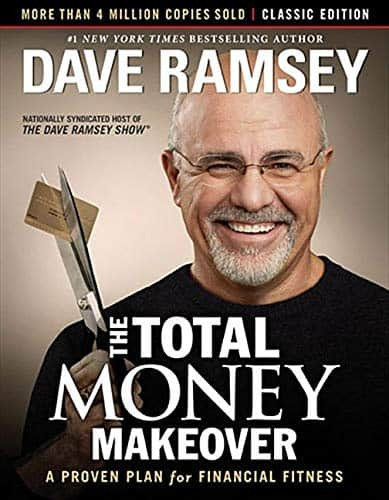
Are you looking for a method to solve all your debt problems?
Reading The Total Money Makeover will help you.
This book is one of the best personal finance books for debt management.
The author Dave Ramsey gives a stable solution for solving your financial problems with real-life examples transparently.
If you are looking for a way to live a debt-free life, this book will give great value to you.
By following the principles and techniques given here, you can achieve financial success over time.
Creating a reliable method for paying off all your debt
perceiving the ten common serious money myths that are bad for you
Ensuring a prominent reserve for your difficulties and retirement!
CLICK HERE TO GRAB A COPY
THE RICHEST MAN IN BABYLON
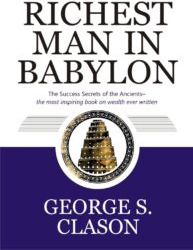
If you are looking for financial discipline, then this book is perfect for you.
From the value of savings to the essentials of becoming wealthy, the author George S. Clason brings you the compilation of legendary Babylonian tales which reveals timeless financial enlightenment.
Every historian accepts that Babylon was the most elegant of all ancient empires, Though it was in the midst of a desert.
The opening segment offers advice on money-making by an elegant & influential man called Arkad, the richest man in Babylon, who even loans gold to the emperor in the times of disaster.
The following segment portrays narratives taken from the ancient writings, all bearing deep-felt financial guidance on the art of wealth-accumulation.
It gives the intrusion of becoming affluent and attract good luck and explains the five laws of gold.
It is a comprehensive guide for acknowledging finances and a substation of time-tested principles to win and sustain personal wealth.
CLICK HERE TO GRAB A COPY
YOUR MONEY OR YOUR LIFE

Are you looking for a way to devise a plan to create wealth?
Do you desire for early retirement?
Then grab a copy of your money or your life written by Vicki Robin and Joe Dominguez.
The authors bring you a nine-step program.
It helps you in establishing a strong relationship with money and achieving financial independence.
Whether you are at the commencement of your fiscal life or going towards the end, this book will teach you,
How to fix the debt and increase savings
How to accumulate wealth by mindfulness and healthy habits
How to advance your earnings and a plan to create wealth
Protecting life while preserving your money
Achieving financial self-sufficiency
CLICK HERE TO GRAB A COPY
THINK AND GROW RICH
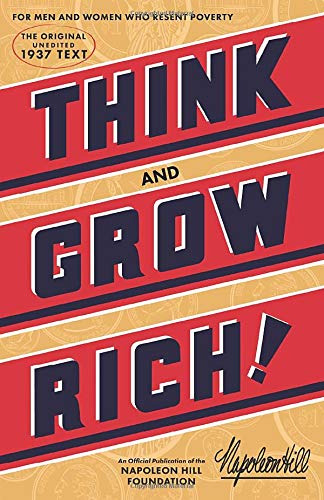
Are you looking for inspiration for living a flourishing life?
Then grab a copy of THINK AND GROW RICH written by Napoleon Hill.
In this book, the author brings the legends of Andrew Carnegie, Edison, Henry Ford, and other tycoons of his contemporaries to demonstrate his beliefs.
It will teach you the ideas which bring you prosperity. After learning and applying these principles, you will achieve continuous success.
It converges on the mindset behind establishing resources with sections on passion and resolution than solely on the approach and control of money.
Be Ready!
When you uncover yourself to the magnetism of this outlook, you will experience a transformed life.
CLICK HERE TO GRAB A COPY
WHY DIDN'T THEY TEACH ME THIS IN SCHOOL?

Are you at the beginning of your career and looking for consciousness on personal money management?
Then grab a copy of Why Didn’t They Teach Me This in School?: 99 Personal Money Management Principles to Live by written by Cary Siege.
The author acknowledged that personal finance skills hardly considered in high schools and colleges.
Sadly, books on the topic are complex.
This book comprises eight valuable lessons concentrating on 99 principles that will shortly refresh money management awareness.
Unlike several personal money management volumes, this book is agile and efficiently absorbed. It concentrates more on the qualitative view than the quantitative side.
These teachings are practical principles discovered by the author as he cruised into his financial career.
CLICK HERE TO GRAB A COPY
THE PSYCHOLOGY OF MONEY

The Psychology of Money by Morgan Housel has 20 engaging chapters with valuable information in a simple way.
The book speaks about the separation between becoming affluent and staying rich.
The author conveys that countless people obtain wealth forgetting how to conserve it. Therefore, it is essential to ascertain how to preserve resources.
According to the author, good behaviour can bring you good fortune.
He revealed several myths in the business atmosphere, notably the perplexity of luck and ability.
It is a book about our mind, how it muses on money, savings, investment and expenses.
CLICK HERE TO GRAB A COPY
LET'S TALK MONEY

Are you looking for insights on financial planning?
Then read let’s Talk Money: You’ve Worked Hard for It, Now Make It Work for You written by Monika Halan.
This book is one of the best personal finance books written in the Indian context.
This book offers you to the essence of financial planning.
The author describes the financial blunders which people generally make and provides a simplistic explanation to financial dilemmas. She also gives a definite plan for money management.
She also gives realistic perspicacity to bypass traps of the commission-driven financial consequences.
This book helps you to manage your funds efficiently.
CLICK HERE TO GRAB A COPY
RETIRE RICH: INVEST RS.40 A DAY

If you are looking for a comprehensive strategy for your retirement life?
Then read Retire Rich: Invest Rs.40 a day written by P.V. Subramanyam.
In this book, the author says quicker you begin, the more resilient profits you will acquire.
This book gives a complete outline of retirement planning to have a monetary discipline to live a peaceful and flourishing retired life.
You will find valuable lessons on,
The importance of retirement planning
Preparing for retirement to command a happy living post-retirement
The prevailing financial situation such as assets, liabilities
Managing payments post-retirement
Will the resources which you have at the retirement age persist more
CLICK HERE TO GRAB A COPY
THE SIMPLE PATH TO WEALTH

Are you looking for insights to build a stable portfolio of your investment?
Then read The Simple Path To Wealth written by J.L. Collins.
The author renders a simple investment procedure for investors from amateurs to specialists.
He also grants specific guidance on how one can avoid debt.
It is addressed in simplistic phrases and can be understood by even a non-professional investor efficiently.
It makes you apprehend that you can advance favourably without propagating to be a specialist. If you are a beginner in the stock market, this book will help you.
Though it was drafted gripping American readers in remembrance, the thoughts are genuine for others as well.
CLICK HERE TO GRAB A COPY
I WILL TEACH YOU TO BE RICH

Are you looking for a way to strategize your cashflow?
Then grab a copy of I Will Teach You to Be Rich written by Ramit Sethi.
This book draws a six-week program for breathing out a wealthy life.
The valuable lessons include,
Resolving your debt and loans quicker
Setting up high-interest bank accounts
How to automate your finances
Saving your money efficiently
A simple investment strategy
How to manage your properties
This book is an easy-to-read and highly actionable book which helps you in strategizing your money.
CLICK HERE TO GRAB A COPY
THE 4-HOUR WORK-WEEK
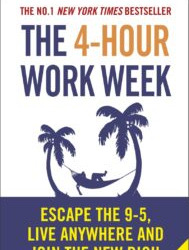
How do your choices turn if retirement is not a likelihood?
Is it necessary to work as a slave to live like a king?
The 4-hour work-week, written by Timothy Ferris has the answer for you.
This book has intended at designing self-regulation and liberation for individuals.
The author emphasizes on being a proprietor of a business than being an administrator.
It brings the process of managing a business in an entirely distinctive fashion.
It questions the thought regarding retirement and money as a resolution for everything.
The author attempts to help readers with four postulates,
DEFINITION: It focuses on the mindset of the people
ELIMINATION: It concentrates on time management
AUTOMATION: It focuses on outsourcing and self-regulation
LIBERATION: It focuses on freedom from a job or a business
This book helps you to cut the restraints of a job and aims at achieving financial independence.
CLICK HERE TO GRAB A COPY
THE CONCLUSION

While discussing on funds management, personal finance is one of the fundamental skills you should learn.
However, it stays challenging for us to acknowledge the significance of managing our resources without proper guidance.
The above mentioned personal finance books will help you to understand the basic principles of financial management.
I have chosen these books based on interpretation and examining various articles. I have read a few of these books as well. If you are fascinated in learning about personal finance, beginning with a book will set the foundation right for you.
If you have regarded this article informative, and like to receive similar monetary tips, methods and suggestions, subscribe to personalfinanceinfo.com.
Our intention here at personalfinanceinfo.com is to support you conserve more enhanced wealth, earn a more satisfying living, and secure the most of your monetary life. If this seems appealing, We would adore having you in our community!
0 notes
Text
Computer Science homework help
Computer Science homework help
What are the core processes in the SDLC used in this book, and what traditional predictive SDLC phase corresponds to each process? What are the 12 Agile modeling principles? by Agile Development and iterative development?
Explain how a Scrum sprint works.
List 10 types of benefits that may be considered when approving a project.
List four different types of major risks that may cause…
View On WordPress
0 notes
Text
Software Building Processes

Buzz words. They are the saving grace of sales reps, inexperienced tech interns, and a coded language for experienced devs. They are the golden idol for business associates within the tombs of an ancient jungle tribe. If you work in business, especially one that touches the tech industry, then you have most certainly heard the words “agile” and the accompanying flashing words associated with the term. Striving to be a proficient lifelong learner dev, it is critical to understand this term and similar terms. This will allow a developer to explain these buzz industry specific terms in layman terms to ensure effective communication with any level of knowledge. I cannot stress the importance of the ability to explain technical ideas in a simple concise way. Mastering this skill will allow aspiring developers to excel in career growth. With this awareness to the importance of understanding, lets discuss agile and the space of software building processes and management methods.
Like all things, veterans of industries define systems to doing things most efficiently for particular priorities and situations. For software engineering, these systems can be called building processes. These processes define the management of a team, defining the activities to be held, and when they are held. Also defined are expect outcomes. An example of building process is test driven development.
Test driven development is a process of software development the cycles starting with adding a test first! One ensures the code fails the new test. Then all tests are ran, if at least one test fails, the developer adds or changes the code in an effort to have all the tests pass. Once all the tests pass, the developer refactors the code into a more optimal design and repeats the cycle. This process is referred as an incremental approach due to its cyclical nature. Test driven development can fall under the the over arching idea of Agile. So what does this mean, and what the hell is agile?
First, it is important to understand that Agile is not something you do, it is something that you believe and think. It can also be seen as goals one strives for, but agile does NOT define how one implements to get to those goals and holds those beliefs. The beliefs of agile are to value Individuals and interactions over processes and tools. Working software over comprehensive documentation. Customer collaboration over contract negotiation. Responding to change over following a plan. In addition there are 12 principles that can be seen as goals one following agile can strive for. The Agile Manifesto, put together by the founders of the mentality is a perfect concise document for agile reference. Processes such as test driven development are implementations of living agile. For example test driven development helps strive for working code as the main priority.
From my course’s preparation, I recommend this link to learn more about software process models.
0 notes
Text
house training a chihuahua | puppy pad training
New Post has been published on https://dogtraining.dknol.com/english/house-training-a-chihuahua-puppy-pad-training/?utm_source=Tumblr&utm_medium=Tumblr+%230+Freda+K+Pless&utm_campaign=SNAP%2Bfrom%2BBest+Dog+Training
house training a chihuahua | puppy pad training
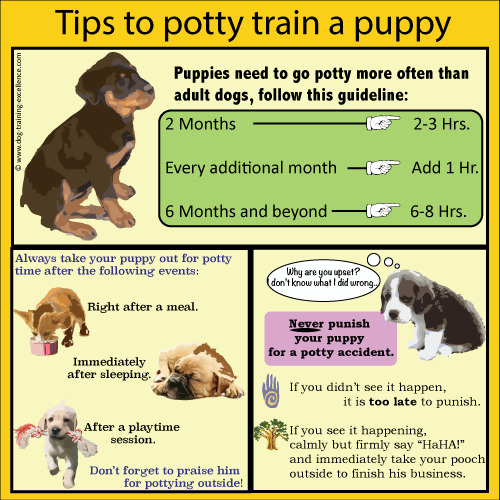
This requires more patience in the beginning but really pays off quickly as a puppy starts to understand that they win their freedom (or a chance to go on a walk) after they’ve pottied. Video of the Day June 22, 2016 at 5:02 pm further reading Ash Portuguese Water Dog HOUSE REPUBLICANS MOVE TO IMPEACH DEPUTY ATTORNEY GENERAL ROD ROSENSTEIN 3. Puppy Crate Training Professor Donaldson spends an entire lecture demonstrating how to train tricks including distance drop, fugitive frisk, and sit pretty. She explains that, from here, you can string these tricks together to make a chain of tricks, or use the same principles to train your dog to do any trick he is physically capable of doing. x Want Unlimited Visits to the Vet? Collie Puppy parties are also a great way to introduce your new pet to similar aged pups. Ask your vet about puppy parties in your area. Canine Dimensions. 2018. All Rights Reserved. Sitemap. Privacy Policy. Next Post At spcaLA, we limit our group classes to between 4 and 8 dogs. This “semi-private” setting allows you to work with spcaLA’s expert trainers to set you and your dog up for a lifetime of happiness. Not only are spcaLA group classes affordable, but our techniques focus on positive reinforcement and fun with your dog! Or you may want to crate train your puppy. (Be sure to learn how to use a crate humanely as a method of confinement.) If your puppy has spent several hours in confinement, you’ll need to take them directly to their bathroom spot as soon as you return. Training Videos What to Do About Ankle Biters Related Content Growly Dog Agility It’s best to avoid handing out puppy food as reward every time. Start gradually replacing the treat with praise. Once your puppy has learned a command, give the treat every other time, then every third time, always praising enthusiastically. Pretty soon, your puppy will work for praise and the very occasional treat. Solid Gold Supplements (2) The Dog Trainer wants you and your dog to have a wonderful time together. If you’ve got a puppy, get simple, sensible pointers for raising her. Rambunctious adolescent? Transform him into a civilized adult. As for the grownups, no dog is too old to learn new tricks – or better manners. The Dog Trainer explains how to get the polite behaviors you want and then turn those behaviors into lifelong habits. Whether you’re housetraining, teaching your dog to roll over, or wondering how to evaluate a dog walker, The Dog Trainer can help. Check out The Dog Trainer’s book, The Dog Trainer’s Complete Guide to a Happy, Well-Behaved Pet. Cats, Partially Explained It’s not so much the dog doesn’t listen, more that he doesn’t understand what you want him to do. Go back to basics and don’t punish him when he toilets indoors. Double your vigilance and take every opportunity to put him outside to toilet. The crucial thing is to be present when he does toilet in the correct place, so that you can reward him. This makes him keener to repeat the performance to get another treat. Conversely, if you have been telling him off for indoor accidents he may already feel inhibited about going to the toilet in your presence, including when he goes outdoors. This is one reason why it’s important not to punish for inappropriate toileting. Enzymatic cleaners are a must! Products To Improve Your Dog Training 345 Ad by PrettyLitter Current Issue Alliance for Natural Health USA Wholesale Program Sign Up & Save Orca calf dies in a disturbing sign for resident whales All puppies misbehave from time to time. How you respond when Puppy misbehaves is very, very important. Anyway, bit of a rant there! To sum up, I would recommend setting up a play area inside with a puppy exercise pen connected to his crate to sleep at one end (as per the image below), and water and toys inside at the other end. Use puppy pads to encourage toileting in one area when he’s alone like this (house train him religiously when you are home) and place tarpaulin underneath the pen to protect your floors and for easy cleaning. But if you consider all the above and decide to place him outside, personally I don’t see anything wrong with it. Superheroes on Parade Customized Dog Training To Fit The Needs Of You & Your Dog Terms and conditions Natural Balance Because your dog wants to please you, Nelson suggests associating potty breaks outside with praise and treats starting the first day.

dog training
puppy training
how to train a puppy
training a puppy
how to potty train a dog
fbq('track', 'ViewContent', content_ids: 'dogtraining.dknol', ); Greetings, welcome to Pavlov Dog Training. I am dog trainer, Tanya Cardwell. Dog Flu: How To Keep Him Safe Show results for: The training we do at Dogs Trust is based on teaching the basic behaviours that dogs and owners need day to day in domestic life. Whether we are working with dogs in our adoption centres and preparing them to go to their forever homes, or teaching owners in Dog School classes, we are focused on doing a thorough job of training the basics which will help owners be able to go about their lives with their new best friends. Saturday 10:30am to 6:00pm Ancient Philosophy Dog Boarding and Training What Not to Do When Your Puppy Bites Contents If your dog does not have access to outside, you can train them to use newspaper or wee pads. Praise them with lots of affection when the newspaper is used and ignore them when it’s not. Be careful not to get in the habit of praising with food treats, because you run the risk of overfeeding. Puppies go to toilet around 12 times a day, and sometimes even more! If you want to retrain them to go outside at a later date then over time, move the newspapers towards the door and then out into the garden. Take a small piece of soiled paper outside, as the puppy recognises its own unique scent and will want to reinforce it. Veterinary 2 Choices to Choose From Related Products Disclosure: This post is brought to you by Business Insider’s Insider Picks team. We aim to highlight products and services you might find interesting, and if you buy them, we get a small share of the revenue from the sale from our commerce partners. We frequently receive products free of charge from manufacturers to test. This does not drive our decision as to whether or not a product is featured or recommended. We operate independently from our advertising sales team. We welcome your feedback. Have something you think we should know about? Email us at [email protected]. Mama comes home for lunch – go outside for potty break If You Find A ‘Mess’ But Didn’t Catch Your Puppy In The Act Well you won’t know for sure, but the clock will give you a good idea. If your puppy needs to wee every 30 minutes, then its a pretty good bet that his bladder is starting to get full if his last wee was more than twenty minutes ago. Counter Surfing and Garbage Raiding Obedience Fun Nose Work Agility Specialty Private Training tips for potty training | how to crate train tips for potty training | puppy pad training tips for potty training | crate training your puppy Legal | Sitemap
0 notes